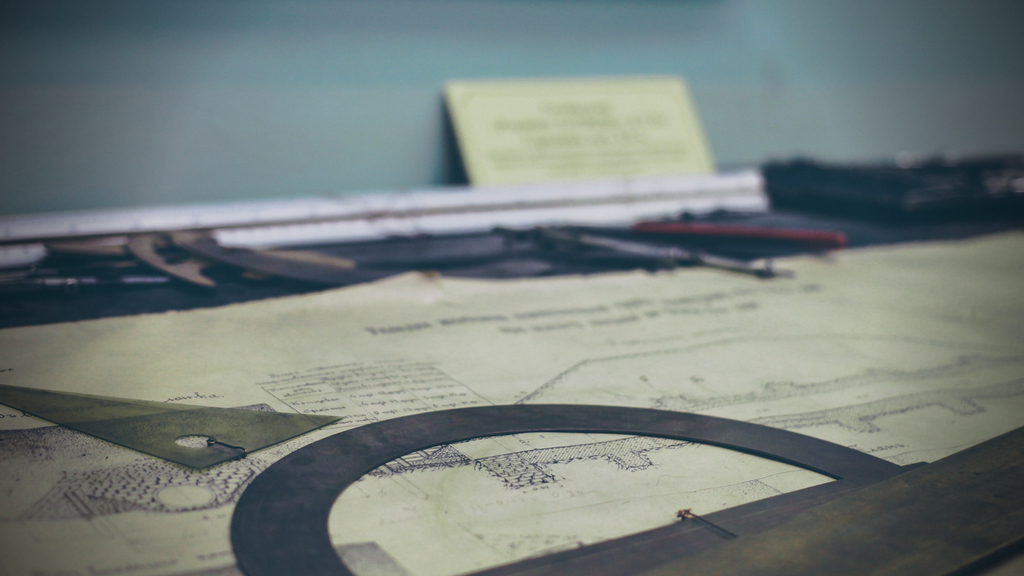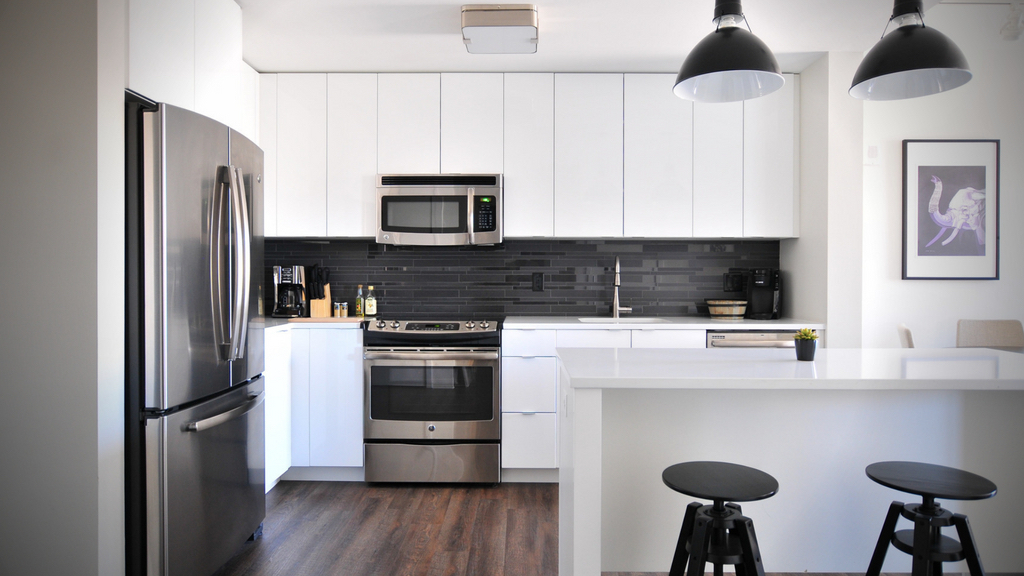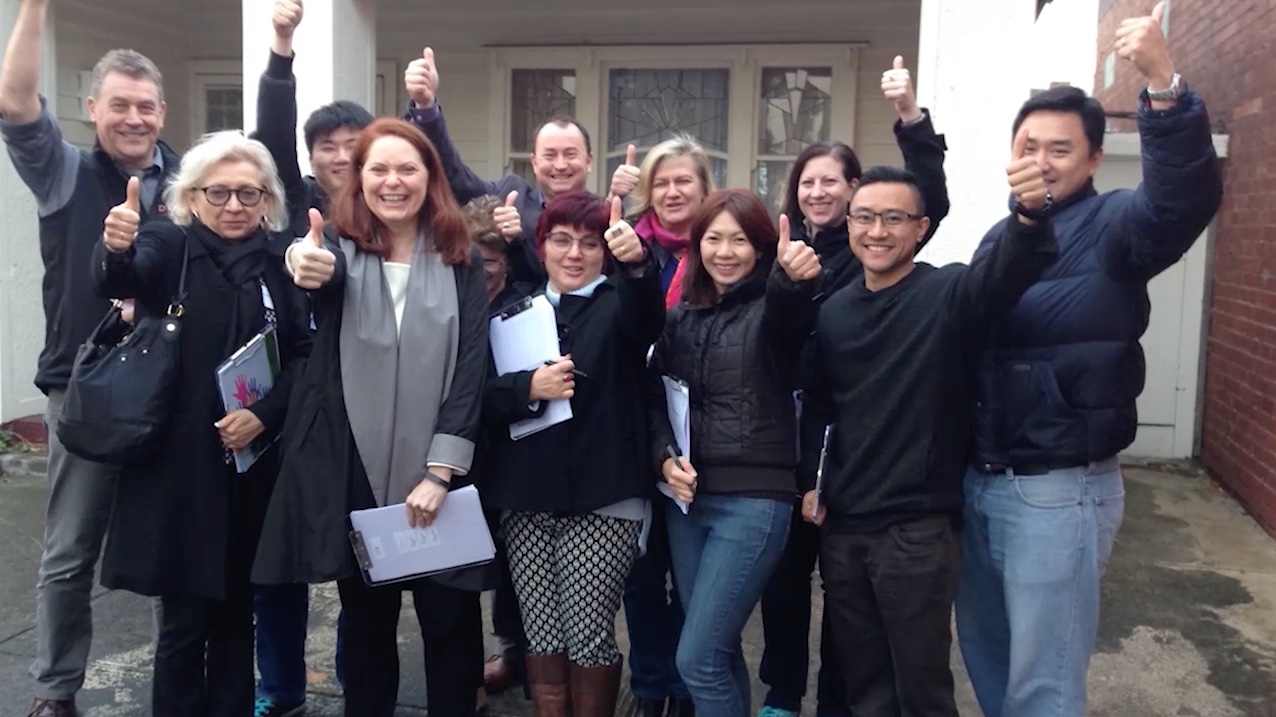16 Aug 10 Investment Strategies to Build a Property Portfolio in Australia

About the author
Jane Slack-Smith has been named one of the Top 10 Property Experts in Australia by Money Magazine, one of the Top 4 Financial Influencers by Qantas and been awarded the Australia’s Mortgage Broker of the Year twice.
Choosing the right investment strategy to grow your property portfolio can be daunting, especially if it’s your first time stepping into the property market. There are so many options to consider and it can take a long time to weigh up the pros and cons to decipher which one is best for you.
Getting your investment strategy right, from the start, will set you on the fastest track for portfolio success; unfortunately, I have seen many, many cases where the seemingly perfect strategy has gone terribly wrong.
Regardless of the strategy that you choose, it’s really important that you understand your goals and the time frame that is required to achieve them. You also need to have some flexibility and be prepared to pivot your original strategy if required. For example, there may be some legislative or lending changes that can affect the overall success of your strategy. Strategies come and go, but by understanding what your goals are, you can ensure that you are proactive, rather than reactive, when charting your own property success.
I’ve compiled the 10 most common strategies used by property investors in Australia. They are all very popular strategies in today’s market, and all have varying amounts of revenue potential and varying amounts of success.
10 Australian Investment Strategies
1. Buy and Sell
2. Buy and Hold
3. NRAS
4. Buying Off the Plan
5. Property Development
6. Granny Flats
7. Positive Cash Flow
8. Capital Growth
9. Short-Term Leasing
10. Strategic Renovation
So which one of these strategies is the right one for you?
Let’s go into detail about these strategies and pull apart what is involved in each one, so you can go out into the market armed with the correct knowledge and with your eyes open.
1. Buy and Sell
The buy-and-sell strategy is one of the original ways to get into the property market, but without an extra step in the middle, a buy-and-sell strategy can be a little hit-or-miss, especially if done in a short turnaround time frame.
The buy-and-sell strategy is when a property is purchased and then returned to the market without any additional improvements made to increase the overall value. The problem with this strategy is that it is very difficult to achieve a larger sale price unless the property was originally purchased at a price drastically lower than the market rate. By the time the sale is complete, the majority of the profit will be absorbed by selling fees and government taxes.
So what’s the step in the middle?
Renovation, of course!
Doing some kind of renovation on the property can help lift the value, allowing you to aim for a higher sale price. My goal with renovations is to make back $2 for every $1 I spend.
Some of the most popular shows on television right now are about everyday people renovating houses and selling them for a profit.
Unfortunately, reality TV does not equal reality when it comes to the Australian property market.
The danger here is when everyday people decide to quit their day jobs to do renovation full time, without a full understanding of how to carry out an accurate feasibility. This can spell disaster for the end result and your bank balance.
Renovating to sell properties is a very advanced property investment strategy and one that is tricky to finance on an ongoing basis, because it’s very difficult to get a loan when you are considered ‘unemployed’ in the eyes of the bank.
While I am an absolute fan of renovation, it’s essential that you take the right steps to mitigate any risks and you also fully understand if this strategy is really suited to your financial situation.

2. Buy and Hold
Buy and hold is essentially what the majority of Australian homeowners already do; they buy and hold their properties (on an average, for 10.5 years).
The good news is that 90.3% of Australian homes are now worth more than when they were purchased!
The downside of this strategy is that it can take many years for a property to gain value, and unless you understand what makes an area grow in value, this can be a very slow strategy.
Choosing the right location will help you get into a profitable position sooner when you decide to sell, and it will also help you successfully rent out the property so it’s never left unoccupied.
3. NRAS
NRAS, otherwise known as the National Rental Affordability Scheme, is when the government rewards you with a tax offset and cash rebate in return for accepting a lower-than-market rental income than what the property is worth to help support those in the community that require some financial assistance.
This scheme is aimed at those with a mid-range income and is different from the housing schemes currently provided by Centrelink.
There are a number of disadvantages to purchasing a property in an NRAS location. This type of property, after the 10-year tax benefit has expired, may not be in the location that you want in your portfolio, and it may not see the capital growth you could experience elsewhere for the same investment. It is also at the mercy of changing governments changing policies and even the tax offset they will allow.
Finally, you need to buy in an approved development, and there is some reluctance from lenders to finance these investments.

4. Buying off the plan
This type of investment strategy is very popular with people first entering the investment market and for first-time homeowners.
Large property developments such as apartment buildings or land estates are set up by development companies and sold off before they are even built. Generally, a buyer can wander through a display home and choose their fixtures and fittings from a list or brochure.
A down payment is made, and once the property is completed, the loan is secured. In a few months (or even years), the owners can walk into their brand new property for the first time. Hopefully, they like it!
The problem with this kind of purchase (aside from the risk of the project not being completed if the whole development is not sold or market forces leave the developer in a difficult situation) is that often there is very little room for capital growth on the property, as the developer has factored any potential growth into the purchase price.
The second issue with this is you are absolutely not getting unbiased advice. The person selling the property is either the developer or employed by the developer and it is in their best interest to get as much money out of you as possible.
House-and-land packages
When a new home estate opens, it bursts into the market with a boom. Often they are adorned with plenty of media coverage, huge display villages, and a swarm of people thicker than the Boxing Day Sales. Essentially, in situations like this, the developers come out on top because they carefully control the supply to maintain the demand. The issue with this type of properties is they are often carbon copies of each other and hence there is no way to differentiate your property from the next. You can’t renovate it, and so often, the person who needs to sell or rent their property sets the sale and rental price on your property. You effectively lose control of your investment.
First-time buyers can become overwhelmed with the amount of work involved and hidden costs when building a property, and although the build is generally managed by an out-of-the-box building company, it still does require decisions on the fixtures and fittings you want. Often, this is where the development companies make their money on the upsell and variances.
It’s also easy to go overboard and overcapitalise on fancy fixtures, fittings and add-ons (hello, rain shower) which may seem appealing for someone building their ‘dream house’, but these aesthetic expenses may not translate well to rental yields or eventual sale.
5. Property Development
Property development is a long-term dream of many renovators and investors. They start off, purchasing a smaller renovation project, with a view to working towards larger scale projects.
Property development has seen a large boom over the last 20 years as more and more of the older blocks are snapped up and subdivided. It’s now very common to see two, three or even four townhouses on a block of land where one single house once stood.
Logically, this strategy makes sense. Buy a house, knock it down, turn it into four and sell them for much more than the cost of the land and the build, giving yourself a profit.
BUT I want to stress here that this strategy is not for the faint of heart.
It does not take much for a simple project to end up costing a lot more than first anticipated. Council approvals, builders, insurance, design, staging, etc. – it all adds up!
In some cases, by the time the entire building process is finished, the property market itself has slowed (or even gone backwards), meaning the developer’s profit can quickly disappear.
I suggest that a property development strategy be carefully considered before committing to it, and if you do decide to go down that road, then make sure you have good mentorship and ample funds to support the project all the way through to completion.

6. Granny Flats
If you own a large block, then putting in a granny flat at the back of your property could provide additional income to your investment property, especially if you are in NSW where the granny flat market is quite popular and legislation says it is legal.
Setting up a mini house at the back of yours could seem like a good idea, but like anything, it’s important to do your research.
Building a flat without the correct council approvals could cost you thousands in fines and you may end up having to tear it down – losing all your investment. In some states and territories, you actually need to have a family member living in the property and it can’t be leased to just anyone. You need to do your research first, make sure you can do it and, equally important, there is a market for you.
It’s also important to remember that you will be affecting the privacy of the existing dwelling and, therefore, finding the right tenants who can live together happily on the same block may be more difficult. The last thing you want is a bunch of uni students blaring their music into the wee hours of the morning, keeping the family in the house awake.
7. Positive Cash Flow
While not exactly a strategy, to be ‘cash flow positive’ is a way of managing your cash flow from an investment property. Essentially, it is when the income that you earn is more than the cost of your expenses.
This strategy means that you are able to enjoy the immediate return on investment and receive a flow of cash without having to wait for the property to be sold.
Some examples of a cash flow strategy are short-term leasing (which I expand on later), homeshare and purchasing in a location that is experiencing a rental housing shortage and demand is very high.
The most common example of a positive cash flow strategy is to purchase a property in a location that is experiencing a shortage in rental accommodation, such as a mining town experiencing a boom. While initially these properties can seem profitable, they are also highly volatile and reliant on situations that are outside of your control.
Imagine if you purchased a house in a rural mining town that was flooded with workers, only to find that the mine was shut down and everyone was forced to leave town. You may find yourself with an unoccupied property that is worth far less than you originally paid for it.
Home-sharing, also known as a rooming house or share house, is where a property is shared by several different tenants. Generally, each tenant will rent one bedroom and will make use of the common areas such as the kitchen, living room, bathroom and laundry.
This arrangement is quite popular in expensive cities like London and New York, and over the years, we have seen an increase in certain demographics like young professionals and older single women.
Home-sharing can be a fantastic way to increase your rental yield; however, it does come with its own set of complications. In some areas, you will need to acquire specific council approval and may be subject to regular inspections.
It can also be quite costly to retrofit a property and time-consuming to manage as you may find yourself screening new tenants on a regular basis and dealing with unexpected property damage and wear and tear.
Often, but not always, in a housing arrangement such as this one, less care is given to the property by the tenants as they are ‘passing through’ rather than aiming to set up a proper residence.
One of the most useful roles a positive-cash-flow property can play is helping balance the portfolio by acting as an additional income stream to service debts, allowing you to pay for other fast-growing properties in great locations.

8. Capital Growth
The capital growth strategy is one that I actively practice in my own portfolio. However, I do this with a twist.
The capital growth strategy involves choosing a property in a location which is set to grow in value over time.
The art of this strategy is being able to accurately predict (with statistics and data) which area within your budget is going to grow the most and outperform the market.
The good news is there is a body of work on the fundamental underpinnings of the Australian residential property market and, in particular, the drivers of capital growth.
Things like:
-
- Supply and demand
- Employment opportunities and a diverse economy
- Infrastructure and development
- Population growth
- Pricing pressure
- And many more…
All of these drivers are known. All of these statistics are available and tracked (daily) by industry bodies, the Australian government and multiple independent data providers…
And this information is available to you right now.
If used correctly, it will allow you to focus on the specific locations that have a unique combination of characteristics that are perfectly suited to your strategy.
Now, I’m not going to sit here and tell you that understanding and applying all of this data to your strategy is easy. In fact, it took me thousands of hours of research and interpretation to really understand how I can use this information for myself.
BUT I can tell you that there is a shortcut to choosing the right property.
I created a software program based on hundreds of Australia reports, and it’s available for you right now inside my LOCATION MASTERCLASS training.
9. Short-Term Leasing
Another way to increase your income is to open your property to the short-term rental market like Airbnb. Hundreds of people all over the world have found success in renting out rooms or entire houses to people. Holiday-makers, inbetweeners, staycationers and business people are all turning to Airbnb to participate in the share-economy.
While this strategy has success with some, it can also be quite tedious and unpredictable if not executed correctly.
Short-term leasing relies heavily on the features of specific locations such as proximity to city centres, beaches and access to public transport.
Houses typically need to be fully furnished and have Wi-Fi access. The cost of cleaning and preparing the properties between short-term tenants can also affect the income you end up pocketing, especially if you outsource this to one of the growing number of companies who offer this service.
Student Accommodation
There is also money to be made from furnished student accommodation. Now more than ever, we are seeing an influx of international students venture to Australia to study.
Many investors have seen opportunities in investing in properties situated near universities and TAFE colleges.
For me, there are many potential downsides to student accommodation as a property investment strategy, including ethical issues. It’s not uncommon to see 6 or 7 people sleeping in one bedroom, and sometimes, these people are paying good money to be there. However, managed correctly, this can be a way to increase your return on your property.

10. Strategic Renovation
Strategic renovation is, by far, my FAVORITE style of investment strategy. It combines the careful prediction methods used in Capital Growth with the traditional method of Buy and Sell.
A strategic renovation is when you purchase a property in the right location for the right price and manufacture equity by renovating the property in a way that sets you up for a high rental yield or a high sale price (depending on your chosen goal).
It is the best of both worlds and, when done correctly, it can set your property portfolio on fire – the good kind of fire!
The ability to manufacture equity puts you in control of your own destiny. This strategy is not cycle-dependent and, when executed correctly, can be carried out at any time in any market stage.
No matter what your circumstances, or what sort of market conditions you face, strategic renovation has the power to speed up your capital gains, increase your rent and get you to your goals sooner.
If you’re buying to renovate and hold (or buying to sell) you can rapidly add value to the right property with strategic renovation (rather than just sitting on your hands and hoping!)
Or maybe you already own a property. In that case, you can manufacture equity to update your portfolio. I did exactly that in 2016. My house was valued at $820k pre-reno and 920k post-reno with just 33k spent.
$820k to $920k. Not bad, huh?
What’s great about strategic renovation is that anyone can do it. You just roll up your sleeves and away you go… or hire tradesmen to do it for you if you’re not quite that savvy with a paintbrush or hammer or if you are time-poor.
It’s a great way for people starting on smaller purchase prices to climb the property ladder.
But here’s the thing: The problem with renovation is that… by itself… it just doesn’t work.
To be brash, “You can’t polish a turd”, meaning if you buy a house in a dud location and try to spiff it up with a strategic reno, chances are it won’t go according to plan (i.e. make a profit).
I know that sounds harsh, but it’s true. Now, in a good market that’s growing quickly, everybody thinks they’re making money from renovation; however, many people are simply oblivious to their mistakes… because it’s actually capital growth that’s covering their mistakes.
However, when the market slows or there is no capital growth, the figures can look very different.
And it’s in times like these you will see there are more people losing money than actually making money with renovation, and that’s because you need to know a few golden rules:
1. Not all properties are equal.
Before taking on any renovation project, either Cosmetic or Structural, you must be certain the property has the capacity to add value.
2. Not all areas are equal.
Viable areas have a large gap in price between the unrenovated and renovated properties. This pricing gap is known as ‘pricing disparity’.
3. To make sure your renovation adds value to the property, you first need to know the fastest and least expensive methods to multiply every dollar you spend on your renovation. Renovating areas that will increase the street appeal, e.g. kitchen and bathrooms, painting, floor sanding and carpet, will add the most value quickly to a property.
4. The bottom line is that, when done strategically, even small improvements can add significant value to a property. A simple exterior paint job alone can easily add tens of thousands to the end value.
It’s knowing how to renovate that gives you equity. This applies to your existing properties and home as well as new IP.
For more about strategic renovation, see my FREE Video Case Study Here.

On Strategy
All you need to do is a simple Google search and you will be overwhelmed with ‘investment experts’ and self-proclaimed ‘gurus’ who are dangling the golden carrot of success in front of your nose, but often these gurus are no more experienced in the market than you are.
I meet property investors every single day and I can tell almost immediately who they have been turning to for advice and investment strategies. Often, they are all pumped up with a particular flashy strategy or technique that is generally not realistic to their circumstances, or in some cases, not very sound property advice.
And it’s not their fault they’ve been caught up in all the hype or some guru’s pitch. It’s an easy mistake to make.
How I purchased my first property
Through thorough research, I selected an area I predicted would experience high capital growth. The suburb I selected was the Melbourne suburb of Carlton.
Next, I purchased the property under market value for $425,000 and used my entire life savings of $45,000 to secure the loan from the bank.
I then performed a strategic renovation on the property to increase the value… and it was revalued at $700,000 nine months later.
Impressive, right?
So how did I do it?
How did I know where to buy and what to do with the property to maximise my rental yield and put my portfolio in a position where I could leverage it to buy another property?
It’s called The Trid3nt Strategy®, and I’m very happy to share it with you!
Over the years, I have distilled my tools and techniques down to a simple process. But as you heard, I didn’t start out knowing any of this…
Property investing was marketed to me as one big life-changing event!
They say I would simply do this strategy once (whatever it was) and everything would change – just like winning the lotto!
How was I supposed to know which strategy to choose?
Since that time, I have gone on to build a multi-million-dollar portfolio – interestingly, using none of those fancy strategies – and what I have discovered since then is that I have had a lot in common with other successful investors I meet.
What’s interesting to me is that many property investors follow a similar path to success.
If you would like to learn more about my Trid3nt Strategy® and start getting into the nitty-gritty, then why not register for my webinar? It’s FREE and jam-packed with real tangible tips and tools that you can put into practice immediately.
See real examples from everyday people getting extraordinary results.

P.S. If you’re serious about building your property portfolio and feel like you want to get it right, the first time, without any hassle (or without wasting money), then register for my FREE Webinar to learn the real secrets behind The Trid3nt Strategy® and my property success.




